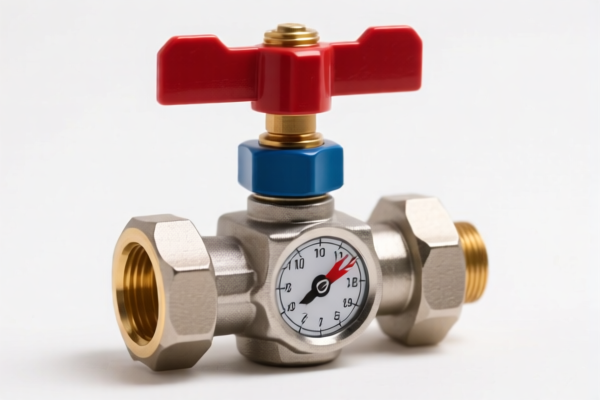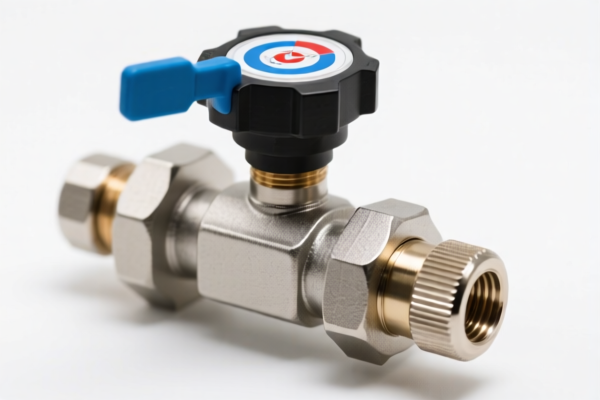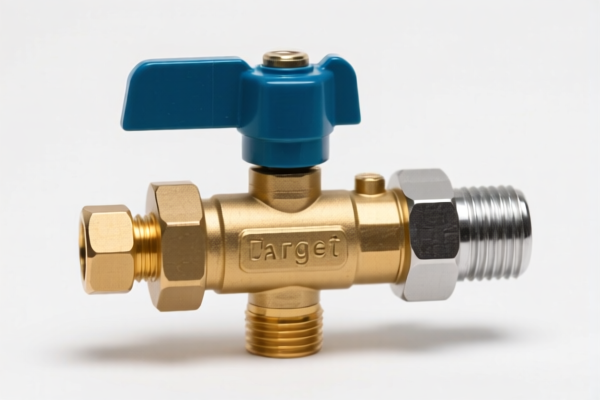| HS Code | Official Doc | Tariff Rate | Origin | Destination | Effective Date |
|---|---|---|---|---|---|
| 8481200040 | Doc | 57.0% | CN | US | 2025-05-12 |
| 8481809015 | Doc | 57.0% | CN | US | 2025-05-12 |
| 8487900080 | Doc | 83.9% | CN | US | 2025-05-12 |
| 8487900040 | Doc | 58.9% | CN | US | 2025-05-12 |
| 8210000000 | Doc | 58.7% | CN | US | 2025-05-12 |
| 9026102040 | Doc | 55.0% | CN | US | 2025-05-12 |
| 9026102080 | Doc | 55.0% | CN | US | 2025-05-12 |
| 9032896060 | Doc | 56.7% | CN | US | 2025-05-12 |
| 9032896075 | Doc | 56.7% | CN | US | 2025-05-12 |




Flow Controller
A flow controller is a device used to regulate the rate of fluid flow. Fluids encompass liquids, gases, and sometimes solids. These controllers are integral to numerous industrial processes, scientific experiments, and everyday applications.
Material
Flow controllers are constructed from a variety of materials dependent on the fluid being controlled, pressure requirements, and temperature ranges. Common materials include:
- Stainless Steel: Widely used for corrosive fluids and high-temperature applications due to its durability and resistance to degradation. Grades 304 and 316 are prevalent.
- Brass: Suitable for non-corrosive fluids and lower-pressure systems. Offers good machinability and cost-effectiveness.
- Aluminum: Lightweight and used in applications where weight is a concern, particularly in pneumatic systems.
- Plastics (e.g., PVC, PTFE, Polypropylene): Employed for highly corrosive fluids or applications requiring chemical inertness.
- Ceramics: Used in extreme temperature or highly corrosive environments.
Purpose
The primary purpose of a flow controller is to maintain or modify the flow rate of a fluid to a desired setpoint. This is crucial for:
- Process Control: Maintaining consistent reaction rates in chemical plants, precise dosing in pharmaceutical manufacturing, and accurate blending of materials.
- Metering: Delivering a specific volume of fluid over a defined time period.
- Pressure Regulation: Controlling downstream pressure by regulating flow.
- Safety: Preventing over-pressurization or excessive flow rates in critical systems.
Function
Flow controllers operate based on various principles:
- Restriction: Utilizing a variable restriction in the flow path (e.g., a valve) to control flow.
- Positive Displacement: Measuring flow by trapping and counting fixed volumes of fluid.
- Thermal Mass Flow: Measuring flow based on the heat required to maintain a constant temperature difference.
- Differential Pressure: Measuring flow rate by sensing the pressure drop across a known restriction.
- Venturi Effect: Utilizing the principle of reduced pressure in a constricted section of a pipe to measure flow.
Control can be achieved manually (via a handwheel or lever) or automatically using a control loop with a sensor, controller, and actuator (e.g., a motorized valve).
Usage Scenarios
Flow controllers are found in a wide range of applications:
- Chemical Industry: Controlling reagent addition, maintaining reaction rates.
- Pharmaceutical Manufacturing: Precise dosing of ingredients, sterile fluid handling.
- Water Treatment: Controlling chemical feed rates, managing flow in distribution systems.
- Oil and Gas: Measuring and controlling flow of hydrocarbons, managing pipeline pressure.
- HVAC Systems: Controlling airflow and coolant flow.
- Pneumatic Systems: Regulating air flow to actuators and other devices.
- Laboratory Research: Delivering precise fluid volumes for experiments.
Common Types
- Rotameters (Variable Area Flow Meters): Simple, visual indicators of flow rate.
- Globe Valves: Widely used for throttling flow, offering good control characteristics.
- Ball Valves: Provide quick on/off control and are suitable for clean fluids.
- Butterfly Valves: Lightweight and cost-effective, suitable for large diameter pipes.
- Mass Flow Controllers (MFCs): Highly accurate devices that directly control mass flow rate, often used in semiconductor manufacturing and research.
- Needle Valves: Provide precise flow control for small flow rates.
- Orifice Plates: Simple and inexpensive, used to measure flow rate based on differential pressure.
- Turbine Flow Meters: Accurate and reliable, used for measuring flow in liquids and gases.
- Ultrasonic Flow Meters: Non-invasive, used for measuring flow in a variety of fluids.
- Magnetic Flow Meters: Used for conductive liquids, providing accurate and reliable measurements.
The declared goods, “target flow controller”, relate to instruments and apparatus used for measuring or checking the flow of liquids or gases, and automatic regulating or controlling instruments and apparatus. These controllers are likely utilized in process control systems to maintain specific flow rates.
The following HS codes are relevant based on the provided reference material:
- 9026102040: Instruments and apparatus for measuring or checking the flow, level, pressure or other variables of liquids or gases; parts and accessories thereof. Specifically, this code covers Electrical Flow meters. This would apply if the flow controller utilizes electrical components for measurement.
- 9026102080: Instruments and apparatus for measuring or checking the flow, level, pressure or other variables of liquids or gases; parts and accessories thereof. This code covers Electrical Other flow meters, applicable if the flow controller is an electrical type not specifically categorized as a flow meter.
- 9032896060: Automatic regulating or controlling instruments and apparatus; parts and accessories thereof. This code covers Other instruments and apparatus, specifically Process control instruments and apparatus, and further specifies Flow and liquid level control instruments. This would apply if the flow controller functions as an automatic regulation device within a process control system.
- 9032896075: Automatic regulating or controlling instruments and apparatus; parts and accessories thereof. This code covers Other instruments and apparatus, specifically Other Process control instruments and apparatus. This is a broader category applicable if the flow controller is a process control instrument not specifically identified as a flow and liquid level control instrument.
Tax Rate Details:
- Codes 9026102040 and 9026102080 have a base tariff of 0.0%, with a 25.0% additional tariff, increasing to 30.0% after April 2, 2025, resulting in a total tariff of 55.0%.
- Codes 9032896060 and 9032896075 have a base tariff of 1.7%, with a 25.0% additional tariff, increasing to 30.0% after April 2, 2025, resulting in a total tariff of 56.7%.
Customer Reviews
No reviews yet.